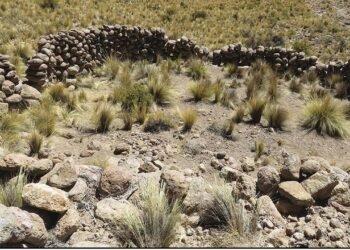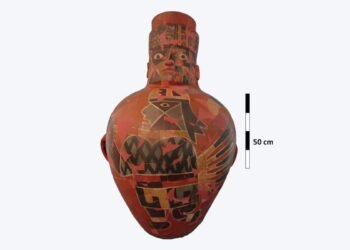Archaeologists recently discovered an ancient ivory vessel estimated to be around 6,000 years old, made from elephant tusks and originating from the Chalcolithic period, approximately 4,000 BCE. The artifact was found at Horvat Raqiq, an archaeological site near Beersheba in southern Israel.
The excavation at Horbat Raqiq revealed an ancient settlement featuring subterranean structures carved into the Loess soil. During the final stages of the dig, archaeologist Emil Aladjem stumbled upon the edge of a basalt vessel, prompting further exploration. This expanded effort unearthed three imposing vessels strategically arranged within the excavation site. Among them, nestled within layers of soil, lay the shattered remnants of the ivory vessel, carefully interred in antiquity.
Dr. Ianir Milevski, former head of the IAA’s prehistoric branch, noted that the deliberate placement of the vessel aligns with scholarly interpretations linking such finds to ceremonial activities.
Measuring approximately 20 centimeters in diameter, the vessel, known as an amphoriskos, features a unique design with symmetrical side handles adorning its neck and base. Its discovery marks the first time a Chalcolithic ivory vessel has been found in the region.
Collaborating with esteemed scholars and experts from the Hebrew University of Jerusalem, excavation directors Avishai Levi-Hevroni and Martin Pasternak embarked on a journey to unravel the mysteries surrounding the vessel. Through meticulous analysis and painstaking conservation efforts led by expert Olga Negnevitsky, the vessel gradually took shape.
This discovery raised questions about its origins and the nature of ancient trade routes. Researchers speculate whether the vessel was imported from Egypt or sculpted locally from imported ivory. Biomolecular analyses led by Dr. Harel Shochat and Dr. Liora Kolska Horwitz are expected to provide information about the elephant’s habitat and the ancient trade networks that facilitated its journey.
The vessel is set to be unveiled at the annual Israel Prehistoric Society Conference, where it will join other recent prehistoric discoveries.






















